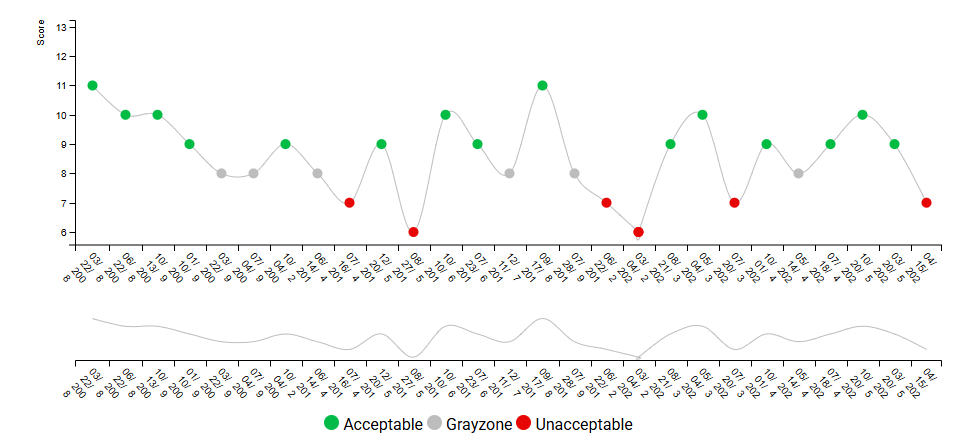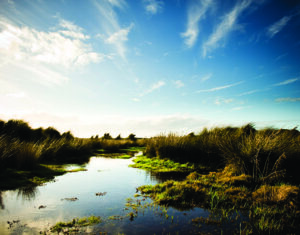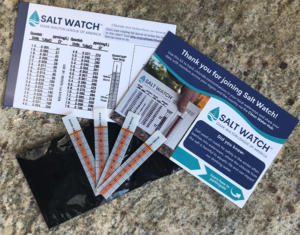Responding to an Acute Pollution Event
On April 3, 2025, a tanker truck carrying gasoline and diesel fuel crashed into a bridge in Great Falls, Virginia. As a result, around 2,600 gallons of fuel spilled onto the bridge and into Difficult Run. Fortunately, The Fairfax County Fire and Rescue Department responded quickly and deployed booms to contain the spill. The majority of the gasoline was either diluted downstream, absorbed by the booms, or permeated into the soil. The Virginia Department of Environmental Quality (DEQ) worked with a contractor to excavate the contaminated soil. DEQ reported no observed impacts to aquatic life or nearby residential wells.
Fortuitously, the Northern Virginia Soil and Water Conservation District (NVSWCD) has been conducting Virginia Save Our Streams (VA SOS) monitoring at site immediately downstream of the spill site since 2008. They monitored the site on March 20, 2025 – a few weeks before the spill occurred. At that sampling event, the stream received an ecological health score of 9, which is considered acceptable. A few weeks after the spill, on April 15, the stream was sampled again, this time receiving an ecological health score of 7, which is considered unacceptable. Ashley Palmer, who leads NVSWCD’s VA SOS monitoring efforts, explained that this score is within the typical spring range for Difficult Run (between 6 and 10). She also noted that there had been a recent rain event, which can wash streambed-clinging macroinvertebrates downstream and affect the score. “I think [the difference in score] has more to do with recent rain before sampling than it does the gasoline spill,” Ashley reported.
Incidents like this highlight the importance of the baseline water quality monitoring our Save Our Streams volunteers conduct every spring and fall. Without an understanding of normal stream conditions, it is difficult to assess the impact of a pollution event on the health of the stream. In this case, although the stream received an unacceptable health score at the first monitoring after the pollution event, NVSWCD was able to compare the score with data collected at the site over the past 17 years and determined that there was not a significant impact on water quality. Nonetheless, the stream did receive an unacceptable health score, so monitors can use this opportunity to raise awareness about the health of the stream and advocate for improvement. For tips on advocating for clean water protections in urban environments, check out this mini-guide.
Ashley and the NVSWCD volunteers plan to continue to monitor Difficult Run and will be on the lookout for any future changes in stream health. You can view all of the data collected at the site since 2008 on the graph below and on the Clean Water Hub.

The majority of pollution issues today are non-point source, meaning the pollution doesn’t come from one discreet source, but is a result of many factors across the landscape. That being said, this acute point-source pollution incident garnered lots of attention and left many people wondering how state agencies respond and what role the public can play. If you observe an acute pollution event in Virginia, here is what you should do (for those outside of Virginia, replace the Virginia Department of Environmental Quality with your appropriate state agency):
- Do not enter the water.
- If the incident poses an imminent threat to human health or the environment, call both 911 and the Virginia Emergency Operations Center (1-800-468-8892).
- If the incident does not pose an imminent threat, report it to DEQ using the online PREP Portal.
- If the pollution event has already been reported, you can search for the report on the portal.
- To receive all documents related to the incident, you can submit a Freedom of Information Act (FOIA) request to DEQ here.
If an acute pollution event occurs near your Save Our Streams monitoring site, do not enter the water until DEQ has determined it is safe to do so. Depending on the contaminant, you may want to wear gloves and close-toed shoes while monitoring. Make sure to clean your equipment well afterwards using biodegradable soap and leave it out in the sun to dry. More information on equipment cleaning can be found on page 13 of the VA SOS monitor manual.

 Your kit will include a bottle containing 25 nitrate test strips which you can use to test your water source(s) throughout the year. You’ll also receive postcards explaining how to use your nitrate test strips and how to share your Nitrate Watch results on the Clean Water Hub.
Your kit will include a bottle containing 25 nitrate test strips which you can use to test your water source(s) throughout the year. You’ll also receive postcards explaining how to use your nitrate test strips and how to share your Nitrate Watch results on the Clean Water Hub. Your kit will include four test strips so you can test your waterway throughout the season. You’ll also receive a chart to help you interpret your results and a postcard with instructions for completing a Salt Watch test and reporting your findings.
Your kit will include four test strips so you can test your waterway throughout the season. You’ll also receive a chart to help you interpret your results and a postcard with instructions for completing a Salt Watch test and reporting your findings.